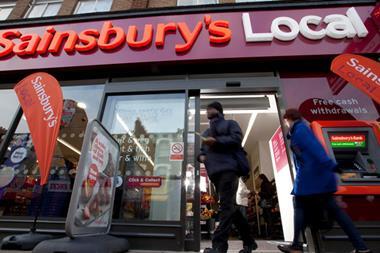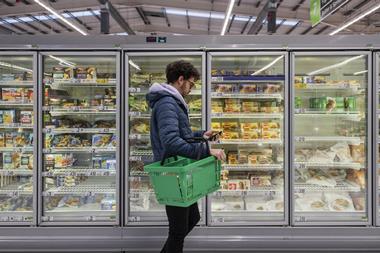Cereals aren't sexy. Sure, they get their moment in the marketing sun when they're dressed up as breakfast cereals or cereal bars. But generally, they're performing their stolid primary commodity turns as animal feed or in products such as beers and spirits developed from malt, pasta, bread, cakes, biscuits and soup. And now products like these face serious price hikes.
Cereals have been at the centre of a perfect storm of factors that has resulted in global wheat stocks plummeting to their lowest levels since the early 1960s - sending prices soaring by more than 75% in just 15 months.
Last April, UK wheat prices stood at £85/tonne, according to the Home Grown Cereals Authority. By November they were £115. Now a tonne of wheat costs £155 and forward quotations for bread wheat delivered in November of this year are nearly £160 a tonne.These costs are already being passed on to manufacturers.
This week, Rank Hovis, sister company to British Bakeries, announced an increase of £69 per tonne of breadmaking flour. So why have the price rises been so dramatic, and what do they mean for the grocery industry?
A range of factors from poor weather to farmers switching crops are to blame, but top of the pile is population growth. It is soaring and grain is more in demand than ever before. Consumption is expected to hit 621 million tonnes this year, up from 585 million tonnes in 2001/02 [National Association of British and Irish Millers]. Yet production has only risen from 585 million to 594 million tonnes.
Expanding food markets and higher incomes in Asia are driving the growth.
"As nations develop, their food tastes change," says Alex Waugh, NABIM's director general. "Higher meat and dairy consumption increases demand for grain to feed animals. As a result, global grain demand is expected to increase by 50% in the next 20 to 30 years. The Organisation for Economic Cooperation and Development expects grain prices to be 50% higher over the next decade."
With the supply demand equation already out of kilter, the weather has only exacerbated the problem. The July and early August harvests will reveal to what extent torrential rain has damaged crop in the UK. But the early signs are not good.
Bread-making wheat in particular is suffering, even as cereal farmers try to compensate for years of losses. "Farmers are planting more cereals, but this is often at the expense of milling wheat used for bread," says Guy Gagen, chief arable adviser for the NFU.
"Last autumn, UK farmers planted more animal-feed wheat to increase premiums, but their crops have been battered by severe weather reducing the quantity that will make milling specification."
As Rank Hovis's decision this week demonstrates, this is not good news for the consumer. "Millers are unable to absorb the wheat price increases and there will be a knock-on effect for any flour related products," says Jon Tanner, sales and marketing director at Rank Hovis.
Ironically, some of the hardest hit have been those who anticipated the rise in demand for cereal crops. They are the ones who planted extra crops only to witness the efforts totally undone by extreme weather across the world.
"Higher plantings across the world created initial expectations of a balance between supply and demand on a global basis," says Waugh. "These expectations have been reduced because of drought in eastern Europe, poor harvest weather in the US and a wet planting season in Canada."
In Canada, this resulted in a shorter season, and the production forecast is now 29% below last year. Ukraine, a big supplier of wheat to the EU, has been hit so hard by dry weather that a wheat shortage has led the government to block all exports over the summer in order to ensure domestic supply.
In western Europe a very dry April followed by wet weather in June and July has given rise to concerns about both the size and quality of the 2007 wheat harvest in France, Germany, and the UK - the three largest wheat producing countries in Europe.
Food producers must be prepared for continuing climate instability, believes Dr Tim Wheeler, head of the Crops and Climate Group at the University of Reading. He envisages a re-configuration of the global grain trade.
"Wheat production will become more difficult in regions where most climate models expect a drying of climate, such as southern Europe, North Africa and the Middle East, and Australia, which will have a variability of climate," he says.
To make matters worse, transport costs are soaring.
The Baltic Exchange Dry Index, which tracks charter rates for dry bulk carriers on 26 of the world's key trading routes, currently stands at 6700 points, up from 2500 in June 2006. So the average cost of hiring a capesize vessel, a ship capable of carrying up to 172,000 tonnes of cargo, has more than doubled - making the cost of imports much higher.
Pressure on food supplies has been further intensified by the growth in the biofuel industry, which is diverting crops from traditional markets. The US is expected to use approximately 80 million tonnes of maize for ethanol production in 2007 and 2008, more than a quarter of the total US crop. The UK biofuel sector is less developed, but new factories are expected to come on stream over the next two to three years in order to hit the government's target of 5% transport fuel from renewable sources by 2010. Bioethanol production plants could consume more than three million tonnes of wheat a year.
Despite the worrying omens, it's not time to panic just yet, says Bob Beard, purchasing director at Warburtons. A spot of good weather would bring the situation under control, for the UK at least. "The harvest is not yet out and we are not planning any price increases on bread," he adds.
There are also measures the likes of Warburtons, Hovis and Kingsmill can take to protect themselves from rising costs.
Growers and manufacturers who purchase grain can manage their risks through futures contracts that allow them to hedge against changes in price, suggests Mike Mendelsohn, economist at the Home Grown Cereals Authority. "Futures provide an alternative to forward sales for growers and purchases for millers and other consumers," he says, adding that options contracts, which guard against fluctuating markets, are another alternative.
The message is clear: the global cereal community needs to take action now. With demand rising as fast as supply is shrinking, the storm clouds look set to linger for some time yet.nWhat is pushing up the price of wheat?
Global demand
Developing nations such as China and India are consuming more meat and dairy products sending demand for feed wheat soaring
Weather
Severe droughts in the southern hemisphere and rain in northern hemisphere have devastated cereal crop yields
Biofuels
The biofuel industry is soaring in the US and bioethanol plants are planned for Europe and the UK
Freight
Rising international freight costs have pushed up the rates for importing and exporting grain dramatically



















No comments yet